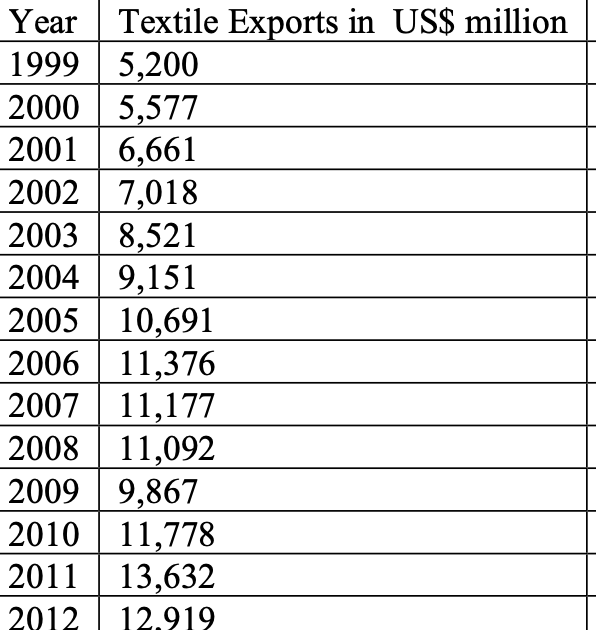Pakistan textile exports more than doubled from $5.2 billion to more than $11 billion during Musharraf years. Exports soared 19.43% in 2001, 20% in 2004, 24.5% in 2005 and 11.23% in 2006, all on President Musharraf's watch, according to "The Rise and Fall of Pakistan's Textile Industry: An Analytical View" published by Javed Memon, Abdul Aziz and Muhammad Qayyum.

 www.riazhaq.com
www.riazhaq.com


Musharraf Era Textile Boom Returning to Pakistan?
News, analysis and opinions about India, Pakistan, US, Canada, Europe, Mid East, South Asia, Silicon Valley, High Technology, Economy, Politics, World







 help enforce law when possible if it is felt Province is not putting in effort
help enforce law when possible if it is felt Province is not putting in effort

